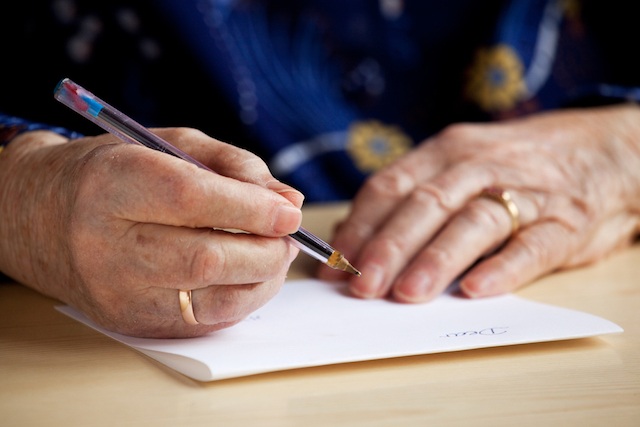
 Eldercare Services
Eldercare Services
 Eldercare Services
Eldercare Services

While the WRAP strategy is useful in many situations, it may not be as effective with dementia in the later stages of the disease. WRAP is a memory enhancement strategy:
W – Write it
R - Repeat it
A – Associate it
P – Picture it
For the person with dementia, the most problematic issue is that of short-term memory loss. That means that the memories of this moment and today are difficult if not impossible to retain. However, the long-term memory from years ago is still intact and likely accessible.
So how does WRAP help? It is not the panacea for memory loss. Think about the individual with dementia as the unique person that they were. Try to include those things that were key to their lives when they were well. Here are some ideas of how WRAP might work.
Write - They may not be able to write themselves, but you could do hand over handwriting. They are still making the marks that designate a specific letter or word which they still have stored in their long-term memory from learning the alphabet as a child. Those long-term memories are most likely to be available if they are stimulated.
Repeat – Verbally repeating an item can help memory because of the additional brain pathways that are embedded in long-term memory. The repetition can even just be related to the word or phrase. Memory channels will be stimulated. We do not remember things in one way and in one place. Stimulating more than one area in the brain is a great help.
Associate – Associations are essential ways to remember bits of information. The association may be only peripherally attached, but if it is meaningful, it will trigger a long-term memory that is still functional. Associations that were meaningful to the person are most likely to sustainable after the onset of memory loss.
Picture – The mental picture may be difficult for the individual with dementia. This may require more of an abstract approach than some of the other elements. Using photos and pictures from magazines, photo albums and movies of tape or CD can all be used for picturing. Typically the person with dementia has difficulty with abstraction, so demonstrable physical tools are most effective.
If you are a family or friend caregiver, you may know information and items from the life of the individual that can be used for the WRAP strategy. The more familiar the item from one’s life, the more likely that it will help trigger the long-held memories and bring them forward. If you need more information regarding the WRAP method and helping people with dementia, please contact us here.